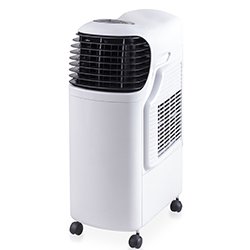I’m sweltering: does my employer have to maintain a set workplace temperature?

What nurses need to know if they are too hot for comfort at work, including your employer's obligations and your rights in the workplace

Keeping cool, whether working in hospital or community settings, can be a challenge.
During a heatwave in 2018, the RCN said nurses were reporting feeling exhausted, sick and dizzy as the sweltering weather outside sent temperatures on some wards soaring to more than 30ºC.
What workplace health and safety regulations say (and don’t say)
Workplace temperature, and your comfort in relation to it, is covered by the welfare aspect of the Workplace (Health, Safety and Welfare) Regulations 1992.
Unfortunately, these regulations are not as useful as you would hope because they stop short of specifying a minimum or maximum temperature. Instead, employers are legally obliged to maintain a ‘reasonable’ temperature during working hours, and what is considered ‘reasonable’ can vary between individuals.
What is more helpful, however, is the code of practice that accompanies the Workplace (Health, Safety and Welfare) Regulations 1992.
While not legally enforceable, the code recommends:
- Workplace temperatures should be at least 16°C, or 13°C where staff are using considerable physical effort to do their jobs.
- Local heating or cooling (such as making best use of fans, opening windows, using radiators) where a comfortable temperature cannot be maintained throughout the workplace
Asking for a hotter or cooler working environment
So how can you challenge workplace temperature if you find it too hot, or too cold?
If you are finding the temperature uncomfortable, speak to your line manager in the first instance and ask them to investigate the issue. You can request that temperature readings be taken at various times in different locations of your workplace to check that the minimum temperature is being maintained.
If this doesn’t address the issue, you can ask your health and safety representative to intervene on your behalf. If a significant number of employees are complaining about discomfort, your employer should carry out a risk assessment, and act on the results of that assessment.

Steps employers should take to keep staff cool
The Health and Safety Executive also recommends employers help ensure staff keep cool in hot conditions by:
- Providing desk, pedestal or ceiling-mounted fans.
- Ensuring that windows can be opened, and shading employees from direct sunlight with blinds or by using reflective film on windows to reduce the heating effects of the sun.
- Allowing sufficient breaks to enable employees to get cold drinks or cool down, and providing additional facilities like water coolers.
- Introducing formal systems of work to limit exposure, such flexible working patterns, job rotation, workstation rotation etc.
- Providing air-cooling or air-conditioning equipment.
Too hot, too cold: tell me more about my workplace rights
Read regulations and guidance on workplace temperature:
Related articles
- Nurses’ dehydration in hot weather is a patient-safety issue
- Menopause at work: managing hot flushes when you’re wearing PPE
- Staying cool and comfortable at work: the challenges PPE

